The yew is one of the most interesting species. It is part of the category resinous plantsbut they do not secrete resin and the fruit are not cones. The wood has a density similar to that of hardwood species (oak), is elastic and resistant to rot and insect attack. The bark and leaves contain taxine, a very dangerous substance for animals. However, the leaves are also the basis for one of the most effective treatments for some cancers.
All this contradictory information is an invitation to learn more about yew trees and yew wood.
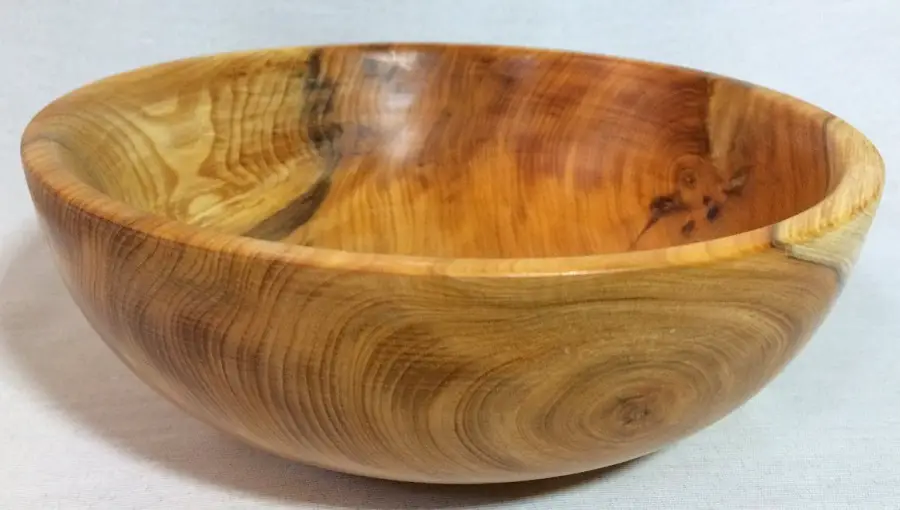
Tisa, protected species declared a monument of nature
In the past, yew was widespread, growing in extensive forests. Intense logging for its timber qualities and its destruction by those who considered it a danger to animals brought the species close to extinction. It has therefore been declared a protected species and a nature monument and its exploitation and destruction has been banned. We have three nature reserves where the yew is preserved: in Botoșani at Tudora, in Vrancea at Cenaru and in Neamț at Pângărați.
It has been intensively exploited not only here but also in the rest of Europe. Being very elastic, yew wood has been used since ancient times to make bows. Ötzi, the mummy discovered in 1991 in the Alps, on the border between Italy and Austria and believed to have lived more than 5000 years ago, had a yew-wood arch beside it. In the medieval period, the many and long wars led to massive felling so that yew almost disappeared from England and Scotland. By the 13th century, these countries had brought yew wood from the Carpathians and Alps on the continent. By the middle of the last millennium, the Austrian Alps had also almost run out of yew. Only the advent of firearms at the end of the 16th century saved the species from extinction.
Its very good resistance to rotting was another reason why it was heavily exploited in the past. It was used in the construction of ships and masts, and its elasticity was also appreciated here.

Yew tree
Yew (Taxus baccata), European yew or common yew in English, is a tree that grows in Europe, northwest Asia and northern Africa. It is found from the Scandinavian peninsula to the Mediterranean Sea and from Spain and Algeria to western Russia and northern Iran. Here it grows in hilly and mountainous areas, together with fagul in beech forests or in mixtures with beech and resinous trees.
The tree grows very slowly and can reach up to 12-15 m, rarely 20 m. At first it develops as a shrub, some of the plants remain at this stage. The trunk diameter can reach 3 m and more in time, because it is formed by several shoots growing together. In fact, shoots appear continuously, which is very rare in resinous trees.
The bark is thin, reddish-gray and may peel off in the form of plaques. The appearance of the tree is triangular, similar to resinous trees, with a wider base in solitary specimens. The needle-like leaves are arranged very similarly to those of fir, but deeper green and softer than those of fir. It does not make cones, the fruit being in the form of red, fleshy berries.
Yew prefers rocky soil and rugged terrain and grows both singly and in patches. It prefers sheltered, shady places with high humidity. The young plant grows only in the shelter of the forest. It grows slowly, reaching maturity after 20 years. It is a long-lived tree, living up to 1000-2000 years and more.
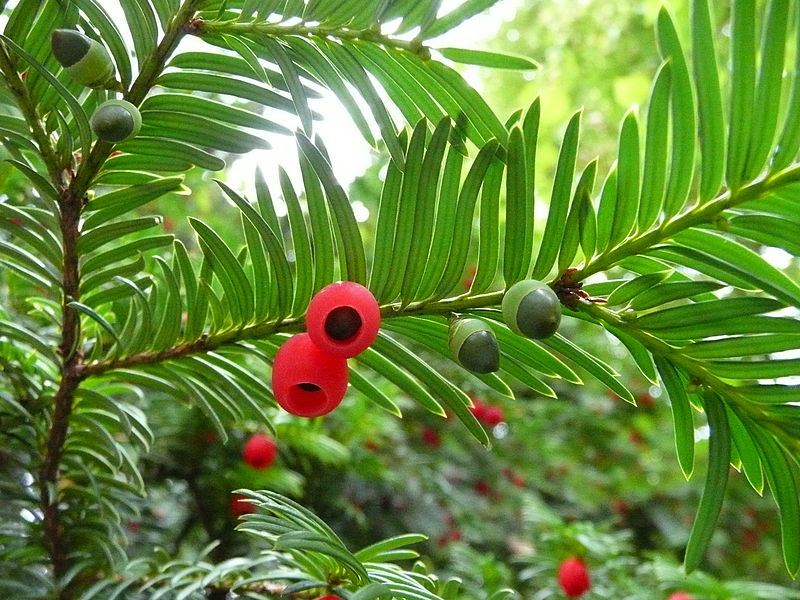
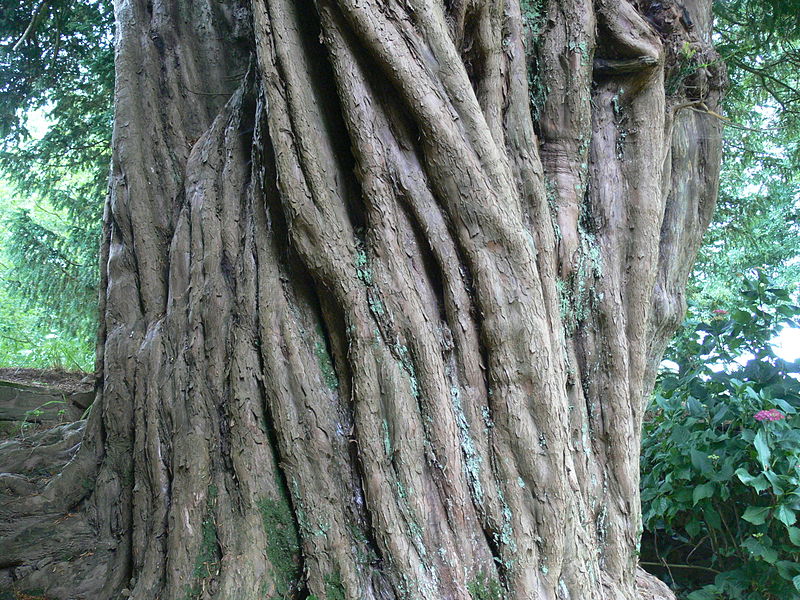
Characteristics of yew wood
In cross-section through the trunk, the difference between sapwood and heartwood is clearly visible. The sapwood is narrow, pale yellow to white, and the heartwood is orange-brown to dark purple-brown with sometimes dark stripes. The colour is darker the older the tree. Slow growth makes the annual rings narrow. The transition from early to late wood is gradual. The grain may be straight if there has been uniform growth, or twisted when there are growth defects. The texture is uniform, with natural gloss and no resinous channels.
Yew wood is dense, with a specific dry weight of 675 kg/m³, comparable to a oak. The compressive strength along the grain is also similar to that of oak, and it was also used in the past for house structures. It is resilient and very durable, being resistant to rot and insect attack. It dries easily with very little loss and becomes very stable, little affected by variations in atmospheric humidity.
It is processed quite easily if the fibre is regular and much harder when knots, twisted fibre and other growth defects appear. It turns easily, polishes and dyes smoothly. Sometimes, because of the oil content it can have sticking problems.
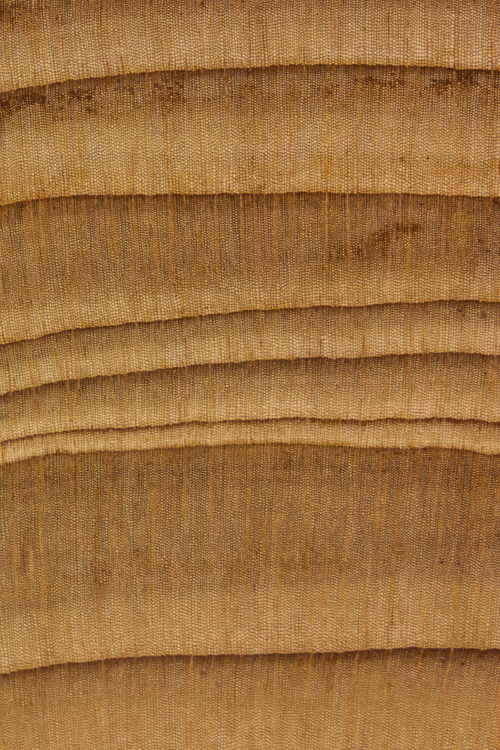
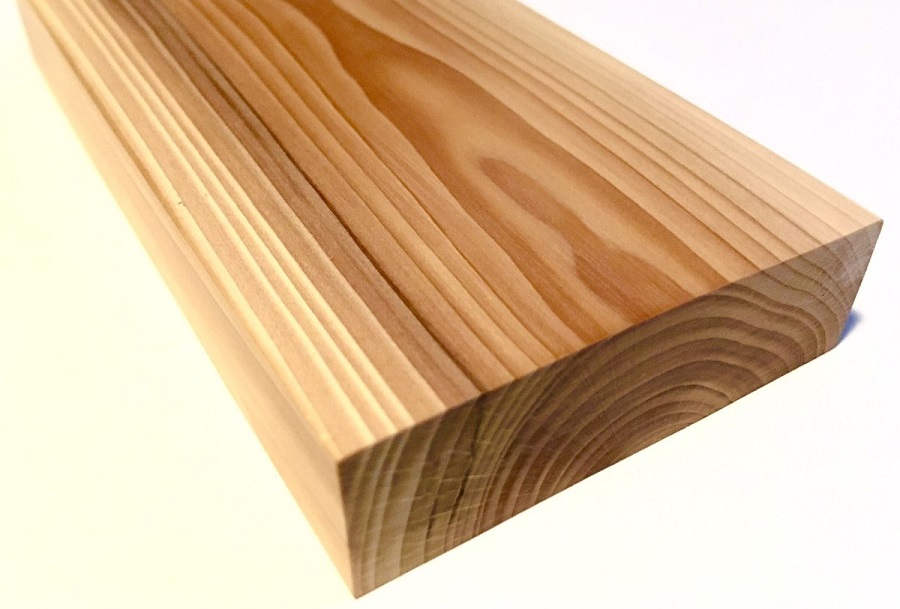
Uses of yew wood
Even if other countries do not ban its exploitation, yew wood is rare and not used in industry. It is a wood with a special colour and pattern, which is why it is expensive and used by carpenters to make special objects. Taxine is also found in wood, albeit in very low concentrations, which is why it is not recommended for making spoons, plates or children's toys. Sensitive people should be careful when working with it and wear a protective mask.
Yew wood can be used to make bows, bowls, pens, knife handles, small furniture, wine barrels, musical instruments or measuring instruments.
Also known as yew is Pacific yew (Taxus brevifolia), which grows in the USA and Canada and has very similar properties. However, it is easier to find and, according to some sources, less toxic.
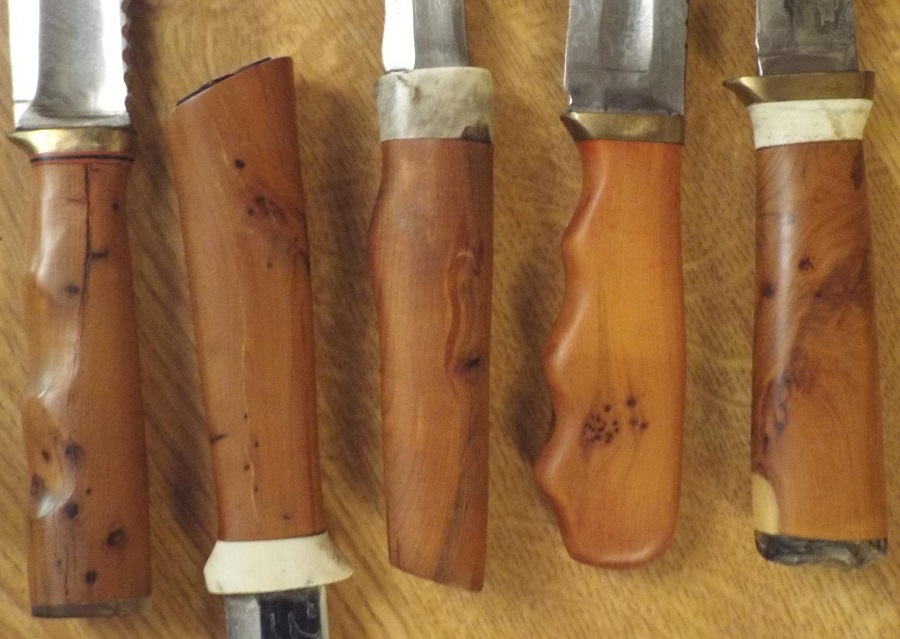
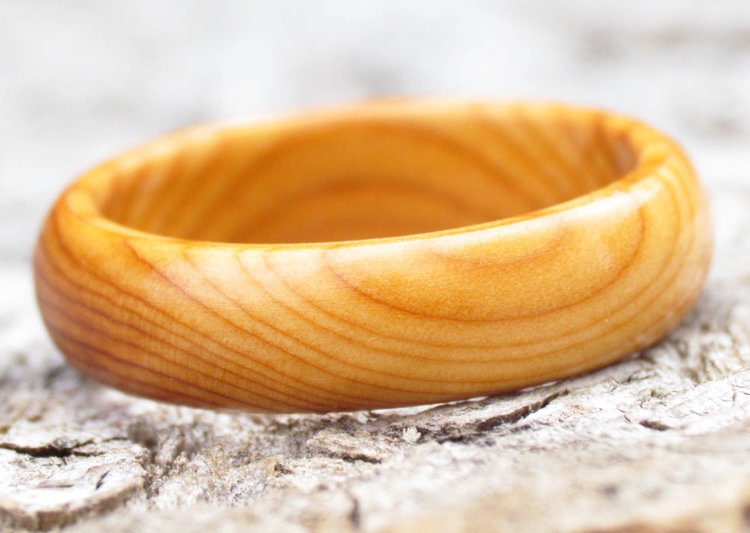
Poison or medicine
Taxine is found in all parts of the tree except the red, fleshy fruit. The highest concentration is in the leaves, varying with the season. In winter, when the water content decreases, the concentration is highest. Taxine attacks the heart and paralyses breathing. It is a strong poison for horses, donkeys, mules and humans, other animals being much less affected. In the past, not only wood was used in warfare but also yew leaf brew. This was used to poison arrowheads. As intrigues at royal courts were in full bloom at the time, yew leaf brew was often used to settle scores. The most famous 'beneficiary' (if only in fiction) was Hamlet's father, whose own brother poured the dangerous brew into his ear.
Research begun in 1958 by the American Cancer Institute (NCI) has radically changed the way yeast is viewed. Over the years the institute has tested the effect of thousands of plants on the development of cancerous tumours. In 1963 it was discovered that Pacific yew bark extract had an effect on these tumours by preventing cell division. The discovery led to Taxol, a revolutionary drug for treating cancer. In 1983, research in France led to the discovery of taxol in yew leaves. The discovery saved the trees, with the leaves regenerating annually. The drug helped save a significant number of women suffering from ovarian or breast cancer.
I hope you find the above information interesting. If you have worked with yew wood, I would love to hear your impressions. And if you have any questions or queries, please leave them in the space below. I will certainly answer them.

























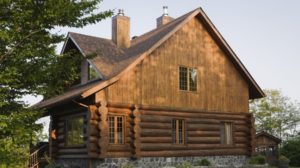
Very interesting. I subscribed to the newsletter to receive articles about trees.